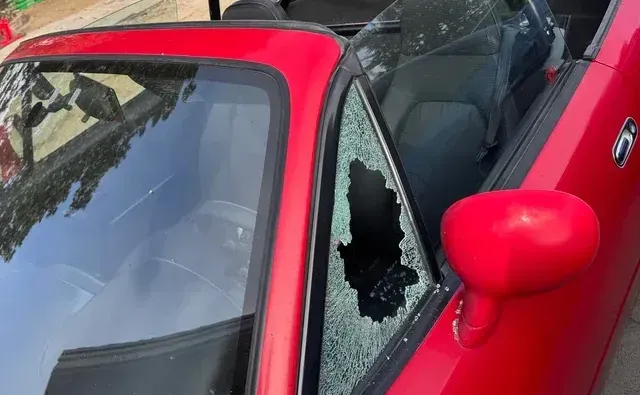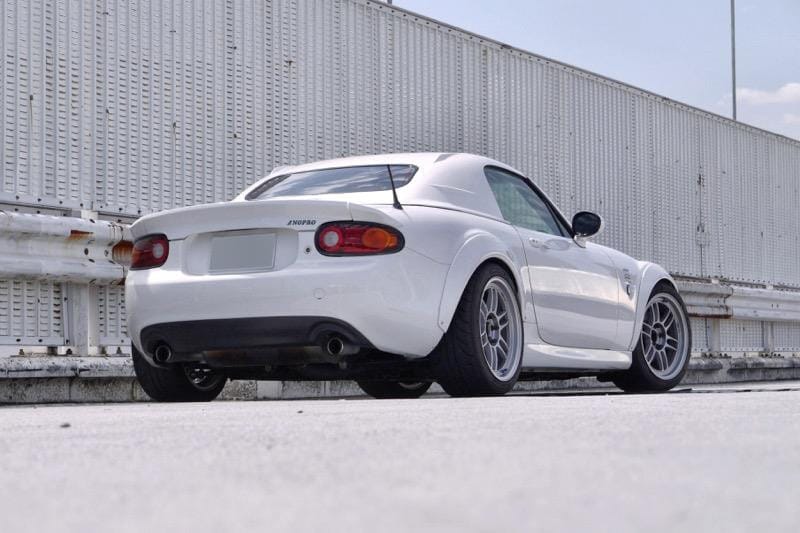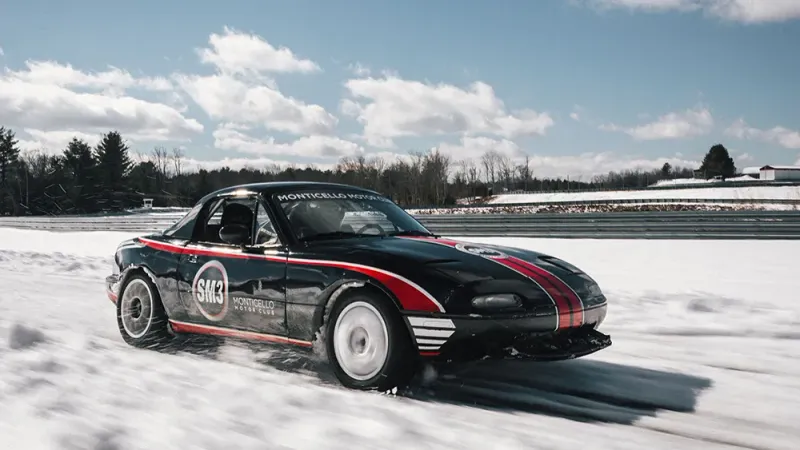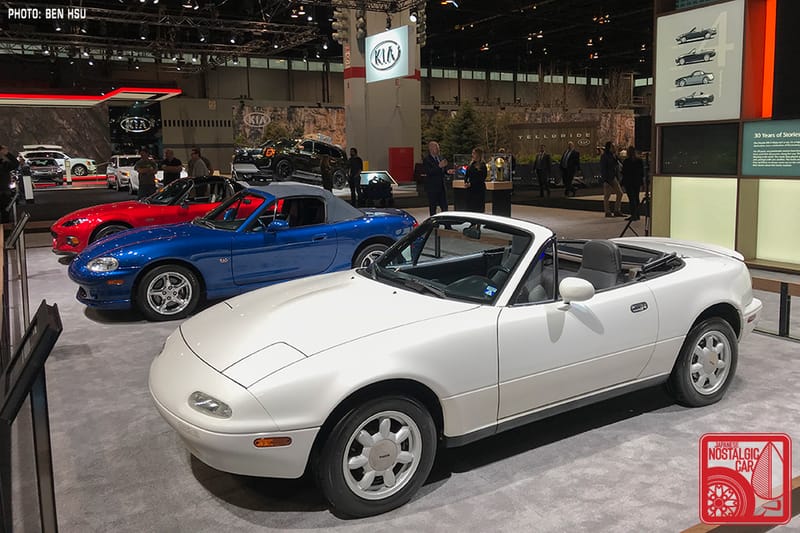The Best Miata Road Trip in Louisiana
Take your Miata on an unforgettable journey through Louisiana’s most scenic and culture-rich roads. With the top down, experience warm bayou breezes, winding backroads, and the rumble of your engine echoing through historic towns.
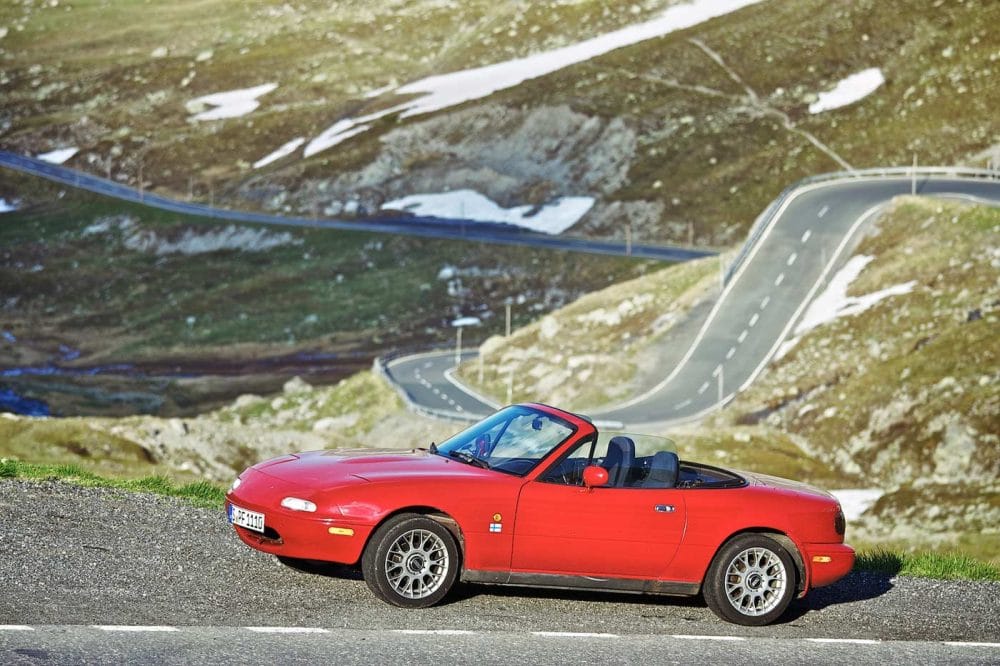
Experience culture, cuisine, and captivating landscapes, all with the top down.
Louisiana may be famous for New Orleans, but the entire state is a mosaic of cultures, histories, and landscapes ripe for exploration. From the echoing twang of zydeco music to antebellum architecture along the Mississippi, there’s a tangible heritage that tells the story of French, Spanish, African, and Caribbean influences. Traveling by Miata heightens every sensation: you’ll feel the warm breeze on your face, smell simmering crawfish in the distance, and hear the joyful chatter of locals, an immersion that only an open-top roadster can provide.
This region’s roads unfold like a living tapestry, offering cypress-lined bayous, sugarcane fields, and coastlines that border the vast Gulf of Mexico. Whether you crave a scenic backroad adventure or a deep dive into Cajun and Creole heritage, Louisiana caters to wanderers of all types. It also happens to be a culinary paradise, where every pit stop invites you to sample boudin, po’ boys, or fresh Gulf shrimp. Five major byways weave through these highlights, Bayou Teche National Scenic Byway, Boom or Bust National Scenic Byway, Creole Nature Trail All-American Road, Cajun Corridor Byway, and the Louisiana River Road All-American Road, making it easy to plan anything from a short weekend getaway to a weeklong trip.
Weather & Seasonality
Louisiana’s subtropical climate dictates how and when you’ll want to plan your drive. Summers, from June through August, are known for soaring temperatures in the 90s Fahrenheit (30s Celsius) alongside oppressive humidity that can test even the most dedicated convertible enthusiast. You’ll need to keep drives shorter, stay well-hydrated, and be ready to pop the top back on if a sudden thunderstorm rolls through. Conversely, late spring and early fall offer a sweet spot of moderate temperatures, fewer biting insects, and festival season in full swing, ideal conditions for a top-down road trip.

When it comes to hurricanes, June through November demands extra vigilance. The coastal byways, such as the Creole Nature Trail, may flood during tropical storms, and evacuation routes can become congested without warning. It’s wise to keep tabs on weather forecasts and local advisories. Additionally, Louisiana’s famed wetlands and bayous teem with mosquitoes and horseflies, dusk and dawn can be prime feeding times for them. Insect repellent and light long-sleeved clothing will ensure you can admire scenic overlooks without becoming a feeding frenzy.
Choose Wisely: Highway 90 vs. I-10
Louisiana’s roads essentially converge on two main arteries: Highway 90 and Interstate 10. If you’re seeking a more scenic experience, Highway 90 is the route of choice. It meanders through charming small towns, sugarcane fields, and bayou vistas, offering photo ops and local diners at every turn. You’ll avoid much of the congestion that plagues I-10, particularly around Baton Rouge, and you’ll find memorable stops like Frank’s Lounge, Spahr’s Seafood, and fruit stands in Raceland. Just remember that some towns strictly enforce speed limits, and construction zones can pop up unexpectedly.

On the other hand, I-10 is the state’s main thoroughfare, providing the quickest path between New Orleans, Baton Rouge, and Lafayette, assuming you aren’t stuck in traffic. The Atchafalaya Basin Bridge offers spectacular views of swampland when you’re moving at a steady clip, but accidents can turn this stretch into a multi-hour standstill with few exit options. For Miata drivers with limited time, I-10 might be the only choice, but a reliable traffic app is essential. Ultimately, Highway 90 is your best bet for an unhurried, culture-rich journey; I-10 is for those needing to make up miles quickly, or those willing to gamble on traffic conditions.

Detailed Scenic Byways
Bayou Teche National Scenic Byway
Winding along LA 31, the Bayou Teche National Scenic Byway traverses the heart of Cajun Country through towns like Breaux Bridge, St. Martinville, and New Iberia. Here, you’ll find moss-draped oaks arching across two-lane roads, weekend zydeco breakfasts, and storied antebellum homes. Breaux Bridge embraces its title as the “Crawfish Capital of the World,” while St. Martinville’s Acadian Memorial illuminates the journey of the Acadian people. The nearby city of New Iberia is known for the historic Shadows-on-the-Teche and the world-famous Tabasco factory on Avery Island. This byway is best savored at a relaxed pace, as speed limits often drop when passing through cozy small towns.

Boom or Bust National Scenic Byway
In North Louisiana, the Boom or Bust National Scenic Byway narrates the economic roller coaster that shaped the region, especially the early 1900s oil industry. Stretching between Greenwood (near Shreveport) and Tallulah, the route weaves through old Southern towns, fields dotted with pump jacks, and quiet highways largely free from heavy traffic. Shreveport’s casinos, Red River waterfront, and the R.W. Norton Art Gallery provide an urban interlude, while rural sections showcase a slower, more historical slice of Louisiana.

Creole Nature Trail All-American Road
For a glimpse into Louisiana’s coastal and marshland ecosystems, the Creole Nature Trail, often starting in Lake Charles, extends into the marshes of Cameron Parish and hugs the Gulf of Mexico. The 180-mile loop features wildlife refuges teeming with alligators, egrets, and herons. Beaches like Rutherford and Holly invite you to pull over and dip your toes in the Gulf. Services are limited, so plan your gas stops carefully. A Miata’s small trunk means you should prioritize essentials, especially when you’re far from urban centers.

Cajun Corridor Byway
The Cajun Corridor Byway loosely follows US 90 through places like Lafayette, Houma, and Morgan City, offering a deep dive into Cajun culture. Houma greets travelers with a giant pair of shrimp boots at its Visitors Center, while Morgan City’s sea wall murals under the US 90 bridge reflect the town’s shrimping history. Culinary treasures abound, whether it’s local boudin, andouille, or a freshly fried po’ boy. Be mindful of speed traps and ongoing construction work near New Iberia, smooth roads can suddenly morph into bumpy stretches.

Louisiana River Road All-American Road
The River Road parallels the Mississippi River between New Orleans and Baton Rouge, weaving through plantation country. Towering live oaks at Oak Alley Plantation create a timeless postcard setting, while Whitney Plantation focuses on the history of slavery and offers a powerful, educational experience. The brightly painted Laura Plantation showcases Creole heritage and architecture. Because the levees can block some of the river views, consider staying overnight to explore multiple plantations at a leisurely pace. Narrow roads demand attention, but the cultural and historical reward is immense.

Memorable Pit Stops & Attractions
Louisiana’s roads are peppered with unique stops that can turn a routine drive into a noteworthy adventure. Frank’s Lounge on Highway 90 is famous for its hearty Bloody Marys, an ideal place to stretch your legs and chat with locals who have endless suggestions for hidden gems. While the once-eccentric Cajun Ark has been lost to storms, its memory lives on in local lore. Morgan City features colorful murals beneath the US 90 bridge, and Lake End Park nearby provides a tranquil setting along Lake Palourde for a picnic.

If you’re a fan of specialty meats, Bourgeois Meat Market near Gray offers smoked andouille, boudin, and a range of Cajun delicacies. Avery Island is a must for hot-sauce enthusiasts: sample Tabasco varieties, tour the factory, and stroll through the lush Jungle Gardens populated by peacocks. For a lesser-known excursion, pop over to New Iberia, where the satirical “New Iberia Haircut” meme has become part of the town’s charm. Meanwhile, Jefferson Island’s Rip Van Winkle Gardens captivate visitors with live oaks, peacocks, and sweeping water views.
Local Culture & Etiquette
Louisiana’s famed hospitality often includes striking up lengthy conversations with strangers, so expect a friendly reception wherever you go. Service can be unhurried, reflecting the local mindset, meals are meant to be savored, not rushed. Live music, especially zydeco, is woven into the fabric of daily life, and impromptu dance halls or community gatherings might pop up in places like Lafayette or Breaux Bridge. Many areas permit open-container alcohol laws, but strict penalties for impaired driving remain. Always designate a driver if you plan to partake in adult beverages.
Language and accents vary across the state, from Cajun French to Creole-inflected English. If you find yourself unable to parse someone’s accent, a polite request for repetition is usually met with a smile and a willingness to help. Embracing these cultural nuances, rather than viewing them as obstacles, can enrich your road trip, as each interaction becomes a lesson in local heritage.
Practical Driving Tips
Wildlife is a common sight, especially near swampy areas: alligators, turtles, nutria, and armadillos sometimes wander near or onto roads. While these encounters can be exciting, remember to slow down and watch for sudden movement. Towns like Jeanerette, Franklin, and Patterson are known for strict speed enforcement, so keep an eye on posted limits, which can drop abruptly. Construction zones, particularly near New Iberia, require vigilance; always check Louisiana DOT updates if you’re traveling through rural areas where detours can add unexpected miles.
For Miata-specific concerns, remember that trunk space is limited. Packing light not only gives you more room for souvenirs but also ensures the cabin remains clutter-free. Louisiana’s climate can shift unpredictably with afternoon storms or intense sunshine, so keep your convertible top at the ready. Sunscreen, hats, and hydration help combat the humidity and heat, especially during peak summer months.

Sample Itineraries
Weekend Sampler (2–3 Days)
A condensed trip might start in New Orleans, transitioning along the River Road to visit historic plantations like Oak Alley or Laura. Spend a night in Baton Rouge, then follow Highway 90 to Morgan City for a quick pit stop at the sea wall murals or Frank’s Lounge. Detouring to Avery Island for the Tabasco tour before landing in New Iberia or Lafayette sets the stage for an evening of zydeco music. Round out the weekend with a brunch stop in Breaux Bridge, a taste of crawfish heaven, before returning to New Orleans.
Weeklong Adventure (5–7 Days)
An extended journey can include all the above plus a foray into North Louisiana’s Boom or Bust Byway, showcasing Shreveport’s casino culture and historical oil heritage sites. Farther south, the Creole Nature Trail near Lake Charles provides a full day’s worth of Gulf beaches and wildlife refuges. Small towns like Franklin or Thibodaux offer glimpses into everyday Cajun life away from tourist hotspots. Each additional day allows more opportunities for spontaneous detours, festival stops, and relaxed dinners of boudin or po’ boys.
What to Expect in Your Louisiana Road Trip
Visitors often leave Louisiana with a list of unexpected discoveries. Strong Cajun and Creole accents can be both charming and bewildering at first. Above-ground cemeteries, a result of high water tables, lend a distinct look to local burial practices. The legendary Southern hospitality can manifest as a stranger giving you detailed local history along with simple directions. Expect slow, deliberate service in restaurants, meals are cultural events here. The heat and humidity can be startling, as can the tenacity of mosquitoes lurking near swamps. Cultures collide and blend everywhere you look, from architecture to food, exemplifying why Louisiana is called a cultural “gumbo.” Roadsides often feature wildlife more exotic than you might see elsewhere, and seemingly constant road construction underscores the struggle of building infrastructure atop marshy soil. Most surprising, though, might be the high quality of food in small-town restaurants, where time-tested family recipes shine on every plate.
Driving a Miata through this rich landscape amplifies each of these delights, allowing you to take in the breeze, the music, and the warmth of the sun without missing a detail.
Let the road lead you through small-town cafés and lively dance halls, under canopies of moss-draped oaks, and along swamps alive with wildlife. Above all, remember that Louisiana is best savored slowly, with a welcoming spirit, a hearty appetite, and the top rolled down, laissez les bons temps rouler indeed!

